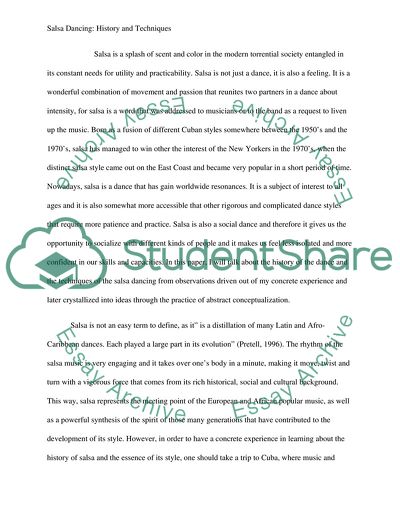Cite this document
(History and Techniques of Salsa Essay Example | Topics and Well Written Essays - 2250 words, n.d.)
History and Techniques of Salsa Essay Example | Topics and Well Written Essays - 2250 words. https://studentshare.org/performing-arts/1736339-salsa-dancing-and-using-the-learning-style-concrete-experience-to-learn-the-history-and-techniques-of-salsa-dancing
History and Techniques of Salsa Essay Example | Topics and Well Written Essays - 2250 words. https://studentshare.org/performing-arts/1736339-salsa-dancing-and-using-the-learning-style-concrete-experience-to-learn-the-history-and-techniques-of-salsa-dancing
(History and Techniques of Salsa Essay Example | Topics and Well Written Essays - 2250 Words)
History and Techniques of Salsa Essay Example | Topics and Well Written Essays - 2250 Words. https://studentshare.org/performing-arts/1736339-salsa-dancing-and-using-the-learning-style-concrete-experience-to-learn-the-history-and-techniques-of-salsa-dancing.
History and Techniques of Salsa Essay Example | Topics and Well Written Essays - 2250 Words. https://studentshare.org/performing-arts/1736339-salsa-dancing-and-using-the-learning-style-concrete-experience-to-learn-the-history-and-techniques-of-salsa-dancing.
“History and Techniques of Salsa Essay Example | Topics and Well Written Essays - 2250 Words”. https://studentshare.org/performing-arts/1736339-salsa-dancing-and-using-the-learning-style-concrete-experience-to-learn-the-history-and-techniques-of-salsa-dancing.


